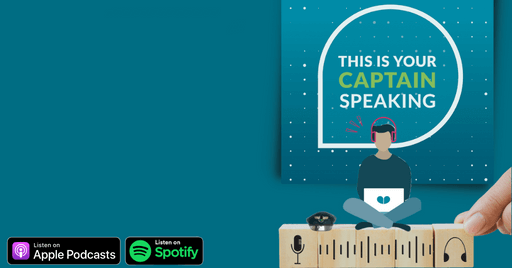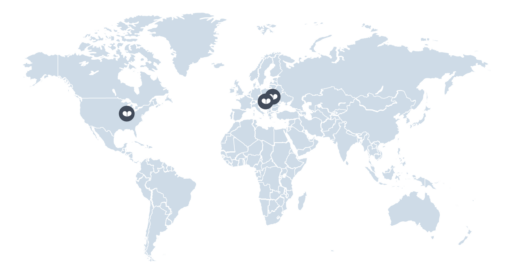Managing many digital assets can quickly go awry, especially if you’re trying to juggle a million files across different projects, teams, and channels. To imagine it even more closely, think about trying to cook a five-course meal in a kitchen where none of the ingredients are labeled.
Doesn’t sound like fun.
Digital Asset Management software was designed to ease this pain and help companies manage as many assets as possible, as effortlessly as possible.
What are the other benefits of Digital Asset Management (DAM), and how to get started with a Digital Asset Management solution? Read on to find out!
What is Digital Asset Management?
Digital Asset Management (DAM) is a system for organizing, storing, and sharing digital files like images, videos, and documents.
Who Should Use a Digital Asset Management System
#1 Marketing Teams
Marketing teams face the challenge of managing a diverse range of digital assets.
A digital asset management system facilitates this process for them, ensuring efficient organization and accessibility of brand assets across campaigns.
With DAM software, teams achieve brand consistency, improve collaboration, and share digital content with internal and external partners as they please.
The DAM solution supports marketing materials management and makes sure digital assets align with brand guidelines, all for simplified marketing operations.
#2 Graphic Designers and Creative Teams
Creative teams and graphic designers benefit greatly from digital asset management software.
These systems offer a centralized location for storing, organizing, and accessing creative files. DAM systems ease the pain of managing version control and improve the review and approval process, allowing designers to focus on creativity and productivity instead of never-ending file organization.
Even further, potential integration with tools like Adobe Creative Cloud can enhance their workflow management, facilitating for seamless asset creation and utilization.
#3 Sales and Marketing Organizations
Sales and marketing organizations very often require immediate access to up-to-date marketing materials.
Digital asset management solutions provide a centralized repository for all digital content – and both marketing and sales teams can present the latest brand assets effectively, and on the spot.
DAM platforms improve customer relationship management with consistent brand messaging and professional presentation of marketing materials, essential for building lasting relationships.
#4 Enterprise Companies
Enterprise companies usually manage digital assets across multiple departments and regions.
Digital asset management systems can help them provide brand integrity and streamlined content distribution.
These solutions offer controlled access to digital files, supporting brand management on a global scale.
DAM software is very often a key for enterprise companies to maintain up-to-date assets, manage permissions, and adhere to compliance requirements.

eBook
Creating a marketing campaign takes a bit more than just some creative flair and a catchy slogan.
This eBook aims to guide you through the 9 most crucial metrics that every marketer should track to measure success effectively.
By the end of this guide, you’ll not only understand the importance of each metric but also know how to leverage them to fine-tune your marketing campaigns for optimal results.
#5 Education Institutions
Education institutions produce extensive digital content, from course materials to promotional videos. With that many digital assets, they need the right system to stay afloat.
Digital asset management platforms help organize and share educational resources, potentially improving the learning experience. DAM systems support academic collaboration, making it easier to update and distribute course content. Such solutions are also vital for maintaining academic standards and accessible education.
#6 Non-Profit Organizations
Non-profit organizations can maximize impact using digital asset management tools. DAM systems often provide an efficient way to manage digital content, all for impactful messaging and brand consistency.
Solutions like these help non-profits focus on their mission by simplifying the management and sharing of digital assets, which is essential for fundraising and awareness campaigns.
#7 Healthcare Providers
Healthcare providers manage a huge amount of digital content critical for patient care and service promotion. Digital asset management (DAM) provides secure storage and management of these assets.
DAM solutions also support healthcare providers by organizing patient education materials and marketing content, all while ensuring compliance with privacy regulations. This efficient management of digital assets facilitates the delivery of quality patient care and information.
#8 Retailers
To manage product images and promotional materials, retailers use digital asset management platforms. DAM systems guarantee accurate product representation across e-commerce platforms and marketing campaigns. With these solutions, retailers can quickly respond to market trends, update product listings, and manage seasonal promotions.
Benefits of Introducing Digital Asset Management
> Streamlined Asset Organization and Accessibility
Introducing a digital asset management system transforms the way organizations store, organize, and retrieve digital assets.
DAM solutions provide a centralized digital asset library, making it easy for marketing teams and other stakeholders to access digital content, including media files, creative files, and brand assets – whenever they want it.
Through a centralized approach, repetitive searches can be eliminated, and all digital assets can be easily accessed and managed, enhancing productivity.
> Enhanced Brand Consistency and Management
A digital asset management solution plays a crucial role in maintaining brand consistency across various digital channels. With DAM systems, brand guidelines and version control are enforced and all digital media assets reflect the organization’s brand identity accurately. As a result, marketing teams are able to deliver a cohesive brand experience to customers and external partners.
> Improved Collaboration and Efficiency
Through digital asset management platforms, internal and external stakeholders can collaborate seamlessly. DAM software supports content creation processes, from initial asset creation to final approval, streamlining project management and reducing bottlenecks.
Through this collaborative process, content production cycles are sped up and sales and marketing teams are able to concentrate on strategic initiatives.
> Secure Asset Sharing and Control
Digital asset management solutions offer advanced security features to restrict access to digital assets and manage how they are shared with external partners and stakeholders. This control often extends to cloud storage, file sharing, and the distribution of digital content.
All sensitive digital files and brand assets are therefore protected.
DAM systems allow organizations to share assets securely while maintaining control over who can view, edit, or distribute them.
> Cost Reduction and Return on Investment
By implementing a DAM system, organizations can significantly reduce costs associated with managing digital assets. DAM software minimizes the need for manual asset management and mitigates the risks of using outdated or off-brand assets. Efficient management of digital content and assets reduces redundant work and accelerates content delivery, leading to improved customer experiences and, ultimately, a better return on investment for the organization’s digital asset management efforts.
How to Start Using Digital Asset Management Software
Step 1: Identify Your Digital Asset Management Requirements
Selecting the right digital asset management (DAM) system starts with a clear understanding of your needs.
Assess how your team currently handles digital assets. Identify pain points in managing and sharing digital files. Consider how a DAM can improve your team’s efficiency and help everyone in the team maintain brand consistency.
The goal is to choose a DAM solution that aligns with your organizational needs and improves the way you manage assets. Invest in a system that truly benefits your marketing team and content creation processes.
- Checklist:
- Types of digital assets (images, videos, documents).
- Volume of assets and anticipated growth.
- User needs and workflow improvement.
- Integration with current systems and software.
- Essential features for brand consistency and workflow.
Step 2: Explore and Shortlist DAM Software Providers
With your requirements in hand, explore potential DAM providers.
Pay attention to user reviews for insights on performance and support. Consider the scalability of each DAM platform.
A thorough research phase is important for shortlisting providers that promise to improve your content management system and digital asset library effectively.
Note: Aim for a DAM system that not only fits your current needs but can also grow with your organization.
- Checklist:
- Providers meeting your requirements.
- User reviews and ratings.
- Platform scalability and adaptability.
- Support and training offerings.
Step 3: Define Your Budget for Digital Asset Management Implementation
DAM implementation requires a budget.
Beyond the purchase cost, you also need to consider setup, training, and integration expenses.
A well-defined budget makes sure that your DAM investment delivers value without straining resources.
Find some balance between cost and functionality. Your chosen DAM system should support brand management without breaking the bank!
- Checklist:
- Implementation and setup costs.
- Subscription or licensing fees.
- Training expenses for your team.
- Integration costs with existing systems.
Step 4: Request and Participate in DAM Software Demos
Demos are your chance to see digital asset management platforms in action.
Focus on how these solutions can streamline managing and sharing your organization’s digital assets.
Find out how DAM software helps you access files in a digital format, including audio files, video files, and creative assets.
Demos often prove invaluable for understanding how a DAM system can reduce repetitive tasks and improve the customer experience as the end result.
- Checklist:
- Request demos from shortlisted providers.
- Evaluate ease of use and user interface.
- Observe how digital assets are managed and shared.
- Note how the platform handles rich media and creative assets.
- Assess the system’s efficiency in reducing repetitive tasks.
Step 5: Analyze Key Features and System Integration Capabilities
Dive into the key features and system integration capabilities of each DAM platform.
Focus on how these features can support your marketing team’s needs—from managing existing digital assets to creating web pages and more if necessary.
Analyzing each DAM solution even briefly allows you to confirm that it will seamlessly integrate with your existing martech stack – or not.
- Checklist:
- List essential features for managing your digital assets.
- Assess integration with existing content management systems.
- Check compatibility with image editing and video software.
- Evaluate capabilities for organizing and accessing rich media.
- Consider the DAM’s role in improving customer experiences through efficient asset access.
Step 6: Solicit Feedback from Future DAM System Users
Get feedback from future users of the DAM system.
These are the people who will interact with the platform daily, managing and sharing digital content. And it’s their insights that can highlight potential issues or confirm the system’s suitability.
Feedback should focus on areas such as ease of use, efficiency in organizing digital assets, and the system’s impact on their workflow.
The chosen DAM solution must meet the requirements of those who will use it most, supporting tasks from managing employee records to enhancing project management with preferred vendor contact details.
- Checklist:
- Collect feedback from potential users across departments.
- Evaluate the system’s user interface and usability.
- Consider the effectiveness in managing and sharing digital assets.
- Assess how the DAM system could streamline current workflows.
- Gather insights on system integration and feature utilization.
Step 7: Select the DAM Solution That Best Fits Your Needs
After thorough research and feedback analysis, it’s time to select the DAM solution that meets your organization’s requirements.
Make your selection based on which DAM platform best addresses your specific needs for asset management and integrates smoothly with your existing digital channels.
- Checklist:
- Validate if DAM meets all identified requirements.
- Verify its ability to manage and share digital assets effectively.
- Confirm support for maintaining brand consistency.
- Evaluate how it will enhance the customer experience.
- Check for seamless integration with existing digital channels and workflows.
Step 8: Develop a Strategy for Transfer of Digital Assets
With the DAM system selected, plan how you will migrate existing digital assets into the new platform.
Developing a complex strategy ensures a smooth transition, preventing data loss and minimizing disruptions.
Prioritize which assets to move first, considering factors like usage frequency and relevance to ongoing projects.
Then, check whether the digital asset management system’s structure is organized in a way that mirrors your operational workflows for easy access and management post-transfer.
- Checklist:
- Inventory existing digital assets to determine what will be transferred.
- Prioritize assets based on usage and relevance.
- Design an organizational structure within the DAM that reflects your workflow.
- Plan the transfer process to minimize operational disruptions.
- Implement a backup plan to safeguard against data loss during migration.
Step 9: Customize Your DAM Platform to Fit Your Workflow
Your new DAM system should support your unique workflows and processes effectively – and that’s why customizing it should be your priority.
Tailor the digital asset management platform to fit the specific needs of your sales and marketing teams.
This might involve things such as setting up custom metadata fields for better asset searchability or configuring the approval process to match your project management needs.
Customizing the DAM software improves operational efficiency. On top of that, it makes sure that your team can manage and access digital assets in a way that best supports their daily tasks. And that’s what matters, right?
- Checklist:
- Configure metadata fields to reflect the types of digital assets your organization uses.
- Adjust user permissions and access controls based on team roles and needs.
- Set up an approval process that aligns with your project management workflows.
- Customize viewing and sharing options to facilitate easy access to digital assets.
- Regularly review and update customizations to keep pace with evolving workflows and needs.
Step 10: Conduct Training Sessions for DAM System Users
To assure users can use digital asset management software effectively, training might prove necessary.
Organize comprehensive training sessions that cover all features of the DAM system. Show – in action – how it can help with the management of digital assets and support the marketing team’s efforts. As a complement to the training session, provide your team with the documentation they can always refer to.
Use real-life scenarios to demonstrate how to manage media assets, maintain brand consistency, and improve workflows.
- Checklist:
- Outline key DAM software features and functionalities.
- Provide hands-on training using real-life scenarios.
- Highlight the process for managing and sharing digital assets.
- Address how to maintain brand consistency using the DAM system.
- Confirm all questions and concerns are addressed to maximize user confidence.
Step 11: Launch a Pilot Program to Test the DAM Software
Before rolling out the digital asset management solution across your organization, initiate a pilot program. Select a small group of users from different departments to use the DAM platform in their projects.
Such a testing phase allows you to identify any issues or areas for improvement in managing digital assets. Gather feedback from pilot users to make necessary adjustments so that the DAM software meets the diverse needs of your marketing teams and the organization as a whole.
- Checklist:
- Choose a diverse group of pilot users.
- Assign real projects to test the DAM system’s functionality.
- Collect detailed feedback on user experience and software performance.
- Identify and resolve any issues encountered during the pilot phase.
- Use insights gained to refine and optimize the DAM platform.
Step 12: Officially Deploy Your Chosen Digital Asset Management Solution Organization-Wide
After successful training sessions and a pilot program, it’s time to deploy the digital asset management platform across your entire organization. This official rollout should be carefully managed for a hassle-free transition for all users.
Communicate the benefits and changes clearly to all departments, and provide ongoing support to address any questions or challenges that arise. Step by step, integrate the DAM system into your organization’s daily operations.
- Checklist:
- Announce the official deployment schedule to the entire organization.
- Highlight the DAM system’s benefits to encourage user adoption.
- Provide access to training materials and resources for ongoing learning.
- Establish a support system for addressing any post-deployment issues.
- Monitor the system’s usage and effectiveness.
Step 13: Continuously Monitor and Refine Your DAM System Use
The implementation of a digital asset management system marks the beginning – not the end – of optimizing how your organization manages digital assets.
DAM software must be monitored and refined continuously to remain a valuable asset management tool. Regularly review how your team uses the DAM system.
Also, evaluate the effectiveness of the DAM solution in maintaining brand consistency across all projects and digital channels.
This ongoing process helps identify opportunities for improving DAM system use. Keeping it up-to-date with your organization’s evolving needs and enhancing its project management and operations capabilities should be your priorities.
- Checklist:
- Conduct regular assessments of how digital assets are managed and accessed.
- Review the DAM system’s impact on maintaining brand consistency.
- Collect feedback from all user groups, especially sales and marketing teams.
- Identify any gaps or inefficiencies in current DAM software usage.
- Implement updates and refinements to the DAM system based on feedback and findings.
- Track improvements in asset management and project workflows post-refinement.
Step 14: Incorporate MRM for a Comprehensive Martech Strategy
Integrating Marketing Resource Management (MRM) with your Digital Asset Management (DAM) system further improves your martech strategy, creating a solid platform for managing not just digital assets but also broader marketing resources.
MRM’s inclusion underscores why digital asset management is important beyond just organizing media files – it’s about optimizing the entire marketing workflow.
Through coupling DAM with MRM, organizations gain a holistic view of their marketing operations. This full synergy gives you visibility into all marketing resources being aligned with the company’s strategic goals, improving efficiency and driving better outcomes.
With MRM and DAM, organizations can implement marketing initiatives more effectively by addressing all facets of marketing resource management.
- Checklist:
- Evaluate your current martech stack for DAM and MRM integration opportunities.
- Understand the benefits of combining DAM with MRM for a unified marketing strategy.
- Identify key areas of marketing operations that can benefit from enhanced resource management.
- Implement MRM solutions that complement your existing DAM system.
- Train marketing teams on the combined use of DAM and MRM for maximum efficiency.
Conclusion
Is digital asset management important? This goes without saying. It’s not enough to just manage your assets, though — you need to do it as smart as possible.
With modern digital asset management systems, it’s easier than ever before.










